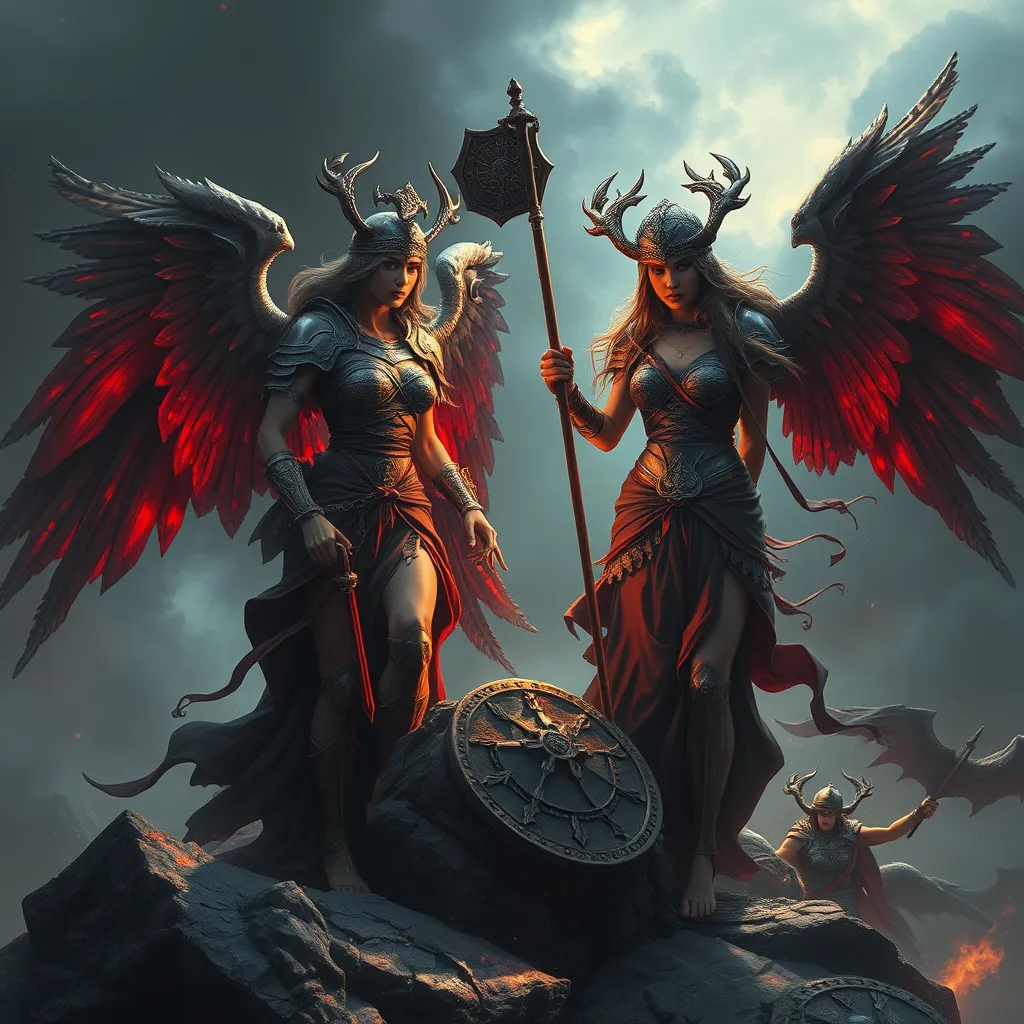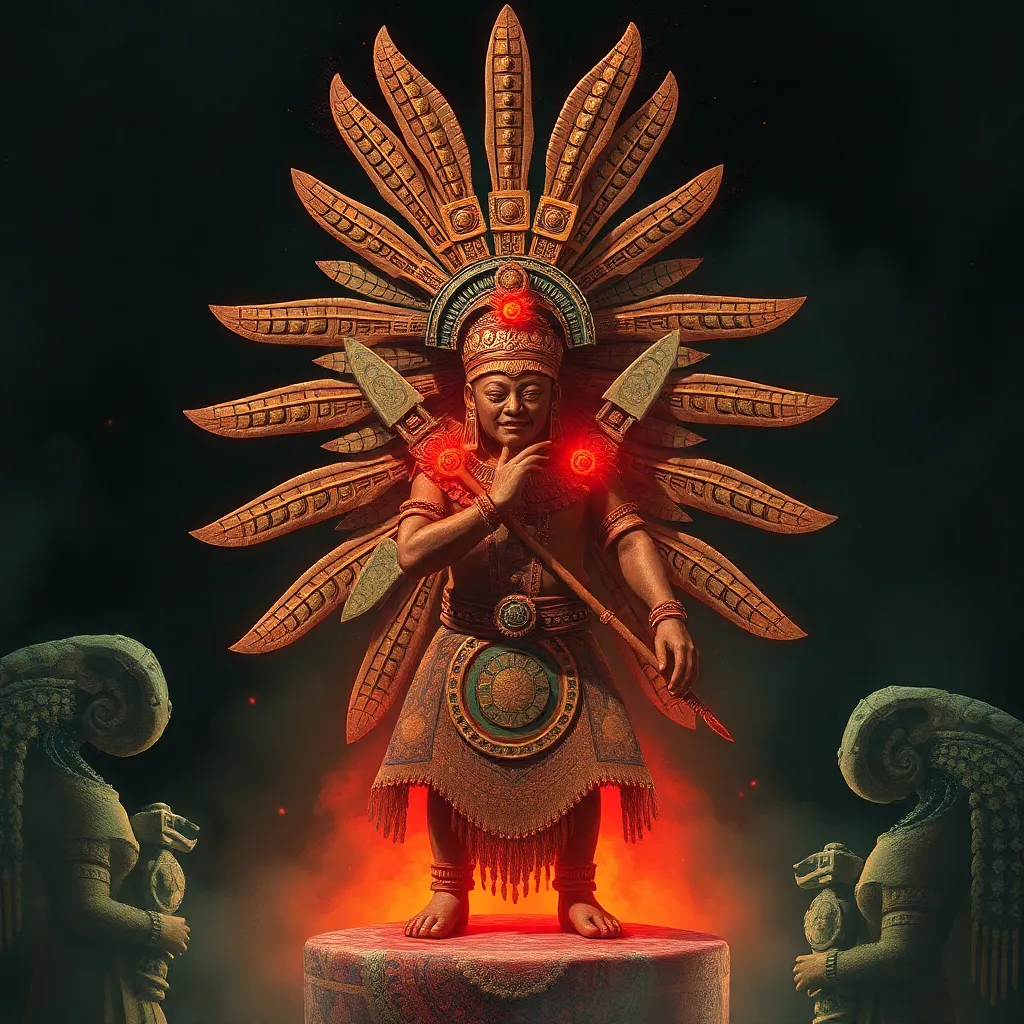Valkyries and Fate: Exploring the Deterministic Nature of the Choosers of the Slain
I. Introduction
In Norse mythology, Valkyries are formidable figures, often depicted as warrior maidens tasked with selecting those who shall fall in battle and those who shall be spared. These divine beings play a critical role in determining the fates of warriors, leading to a complex interplay between the concepts of choice and fate. This article aims to explore the intricate relationship between Valkyries and the deterministic nature of fate in Norse culture, revealing how these figures embody the tensions between free will and destiny.
II. The Role of Valkyries in Norse Mythology
Valkyries are primarily known as the choosers of the slain, a role that underscores their importance in the warrior-centric culture of the Norse people.
- Description of Valkyries as warrior maidens: Valkyries are often depicted as beautiful and powerful women, clad in armor and wielding weapons. They ride across the battlefield, selecting the bravest of warriors who have met their end in combat.
- Their function as choosers of the slain in battle: After a battle, Valkyries guide the souls of the fallen warriors to Valhalla, the hall of the slain, where they will prepare for the final battle at Ragnarök.
- Symbolism of Valkyries in relation to death and honor: Valkyries symbolize not only the honor associated with dying in battle but also the inevitable nature of death, acting as a bridge between life and the afterlife.
III. The Concept of Fate in Norse Beliefs
Fate, or Wyrd, is a central concept in Norse mythology, shaping the lives of gods and mortals alike.
- Explanation of Wyrd and its significance: Wyrd is often understood as the interconnected web of fate that governs all events in the universe. It highlights the inevitability of fate while also acknowledging the choices made by individuals.
- The Three Norns and their relationship to fate: The Norns, Urd, Verdandi, and Skuld, are the weavers of fate, determining the destinies of gods and humans. They represent the past, present, and future, emphasizing the continuum of time and fate.
- Fate’s perception as a guiding force in life and death: In Norse culture, fate is seen as a guiding principle that individuals cannot escape, creating a sense of acceptance toward one’s destiny.
IV. The Deterministic Nature of Valkyries’ Choices
The role of Valkyries raises important questions about the nature of choice and autonomy within the framework of fate.
- Analyzing the notion of choice in the context of the Valkyries: While Valkyries are tasked with choosing which warriors will die, their choices are often perceived as predetermined by fate itself.
- Are Valkyries truly autonomous in their decisions? This raises the question of whether Valkyries exercise free will or if they are merely agents of fate, executing the will of the Norns.
- The implications of predetermined outcomes in battles: The idea that battles and their outcomes are predetermined can lead to fatalism, where individuals may see their struggles as futile against the larger tapestry of fate.
V. The Interplay Between Free Will and Destiny
The relationship between free will and predetermined fate is complex and often contradictory.
- The tension between individual agency and predetermined fate: Norse heroes often grapple with their destinies, making choices that reflect their values and beliefs, yet those choices may still lead to fated outcomes.
- Examples of Norse heroes navigating their destinies: Characters like Sigurd and Beowulf illustrate how heroes can confront their fates with courage and determination, yet their paths are ultimately shaped by a predetermined destiny.
- How Valkyries embody this tension in their roles: As choosers of the slain, Valkyries symbolize the struggle between the desire for autonomy and the acceptance of fate’s inexorable pull.
VI. Cultural Interpretations of Valkyries and Fate
The depiction of Valkyries and the concept of fate have evolved over time, influencing various cultural interpretations.
- Exploration of literary sources (e.g., Eddas, sagas): Ancient texts such as the Poetic Edda and the Prose Edda provide rich narratives around Valkyries and their roles in shaping the fates of heroes.
- Artistic representations of Valkyries throughout history: From medieval art to contemporary interpretations, Valkyries have been portrayed in various forms, often emphasizing their dual nature as warriors and guides.
- Modern adaptations and reinterpretations of Valkyries and fate: Today, Valkyries appear in literature, film, and pop culture, reimagined as symbols of empowerment, strength, and the complexities of fate.
VII. Implications of the Valkyries’ Influence on Human Lives
The belief in Valkyries and fate has profound psychological and philosophical implications for individuals and societies.
- The psychological and philosophical impact of believing in fate: A belief in fate can provide comfort, suggesting that individuals are part of a larger narrative beyond their control.
- The role of Valkyries in shaping societal values around bravery and honor: Valkyries embody ideals of courage and honor, influencing how societies view heroism and sacrifice.
- How this belief system influences contemporary perspectives on fate: Modern interpretations of fate often reflect a blend of determinism and free will, resonating with individuals facing life’s uncertainties.
VIII. Conclusion
In summary, Valkyries serve as powerful symbols of the interplay between fate and free will in Norse mythology. Their roles as choosers of the slain highlight the deterministic nature of fate, while also embodying the struggle for individual agency. The lasting legacy of Valkyries continues to influence modern culture, prompting ongoing discussions about the balance between fate and free will in the human experience. As we reflect on these themes, we are reminded of the intricate tapestry of life, where choices and destinies are interwoven in ways that continue to intrigue and inspire.



